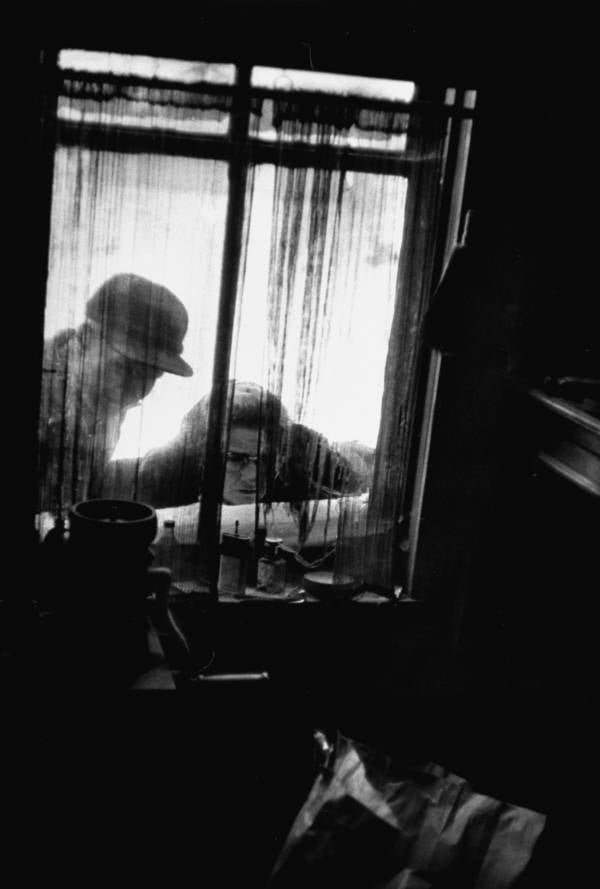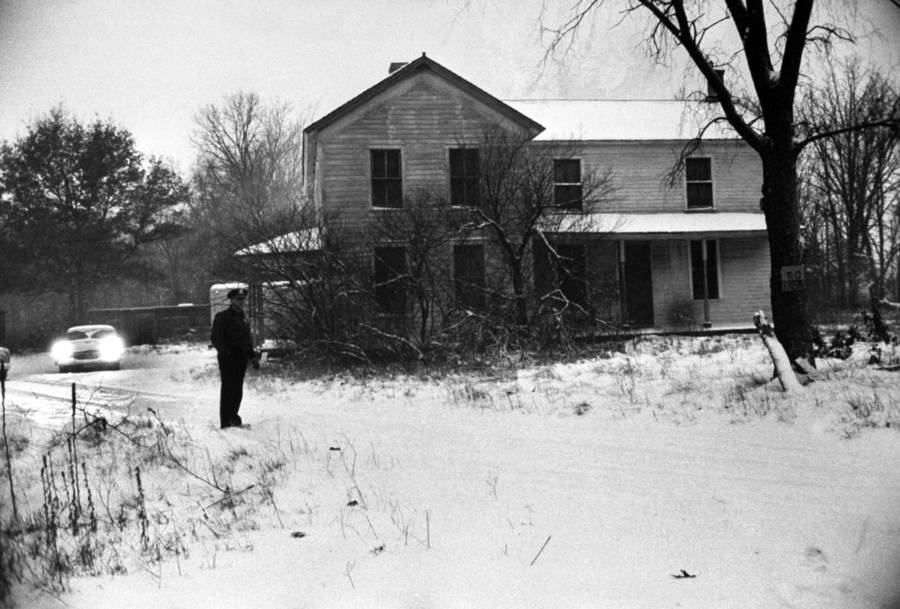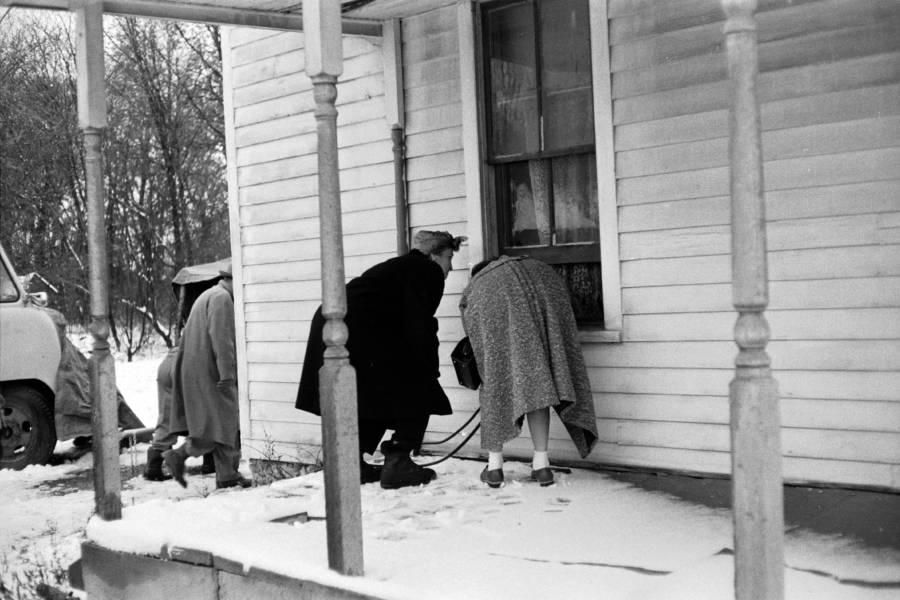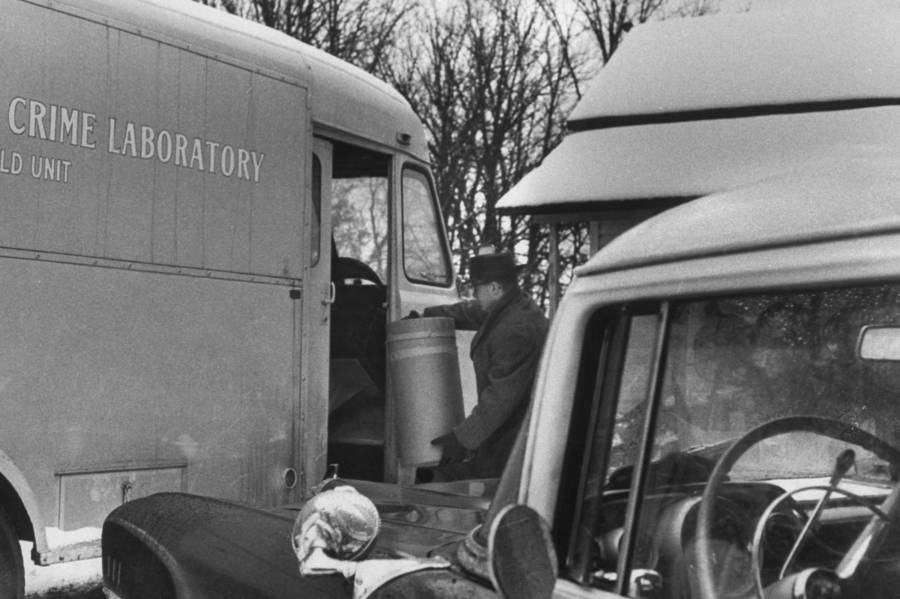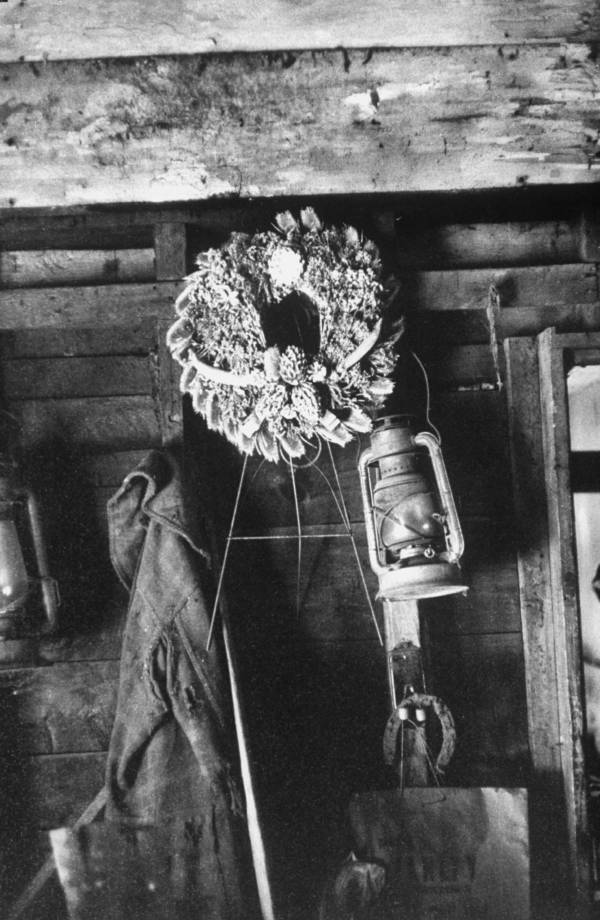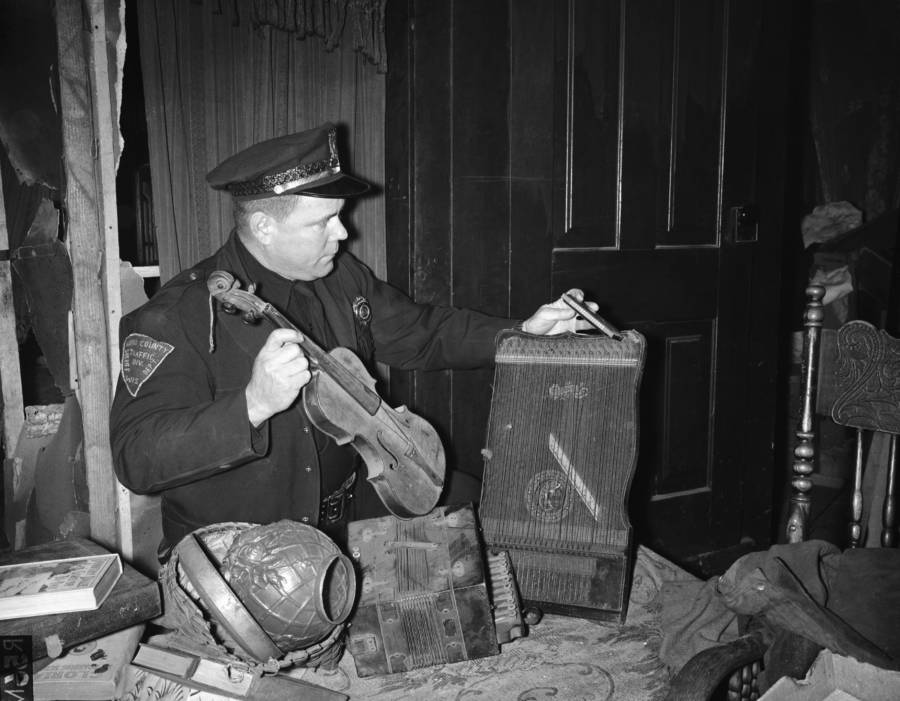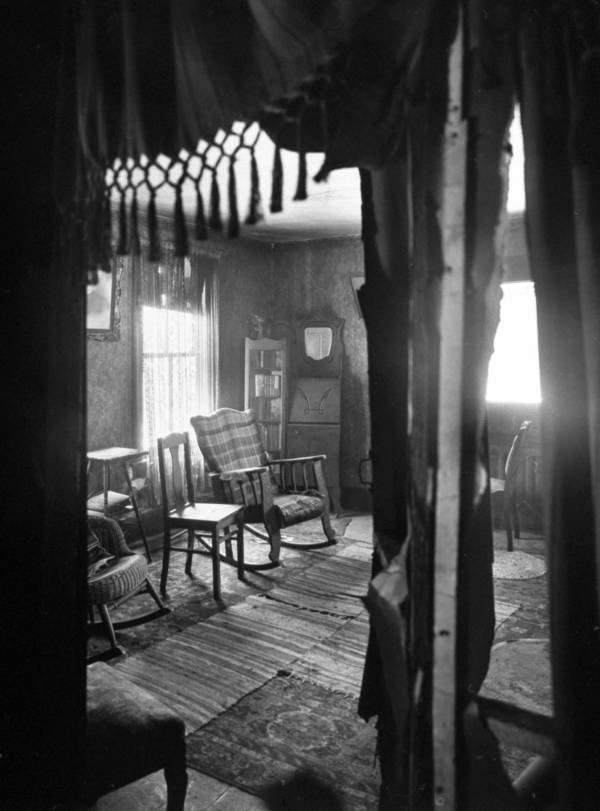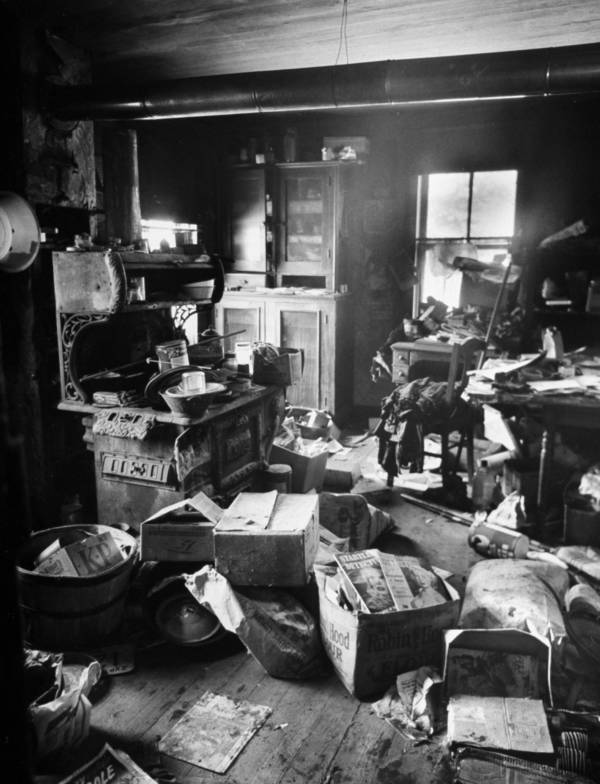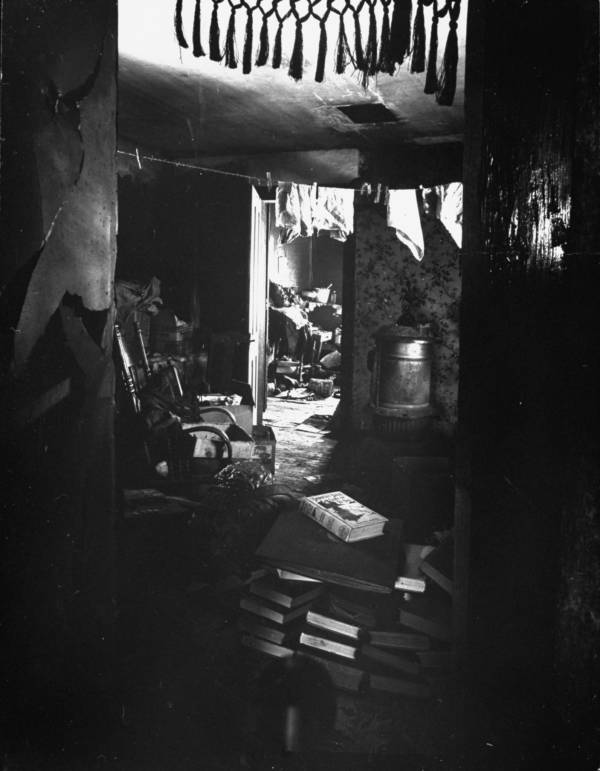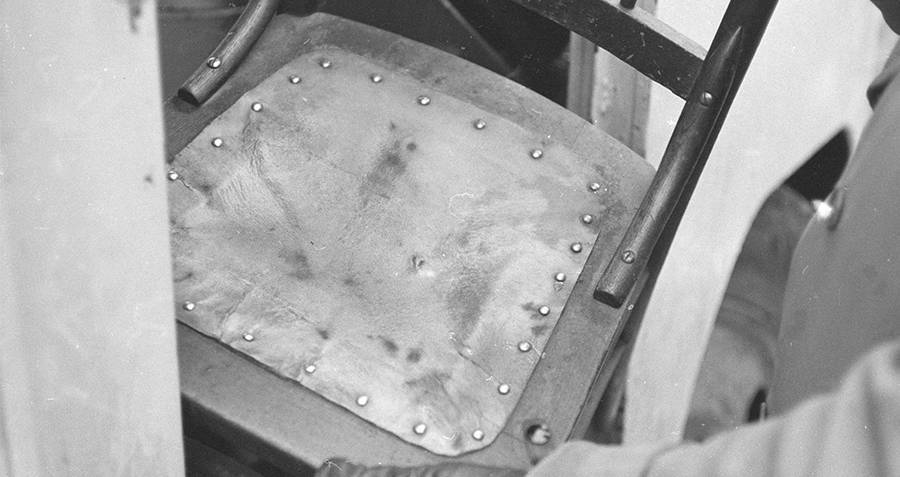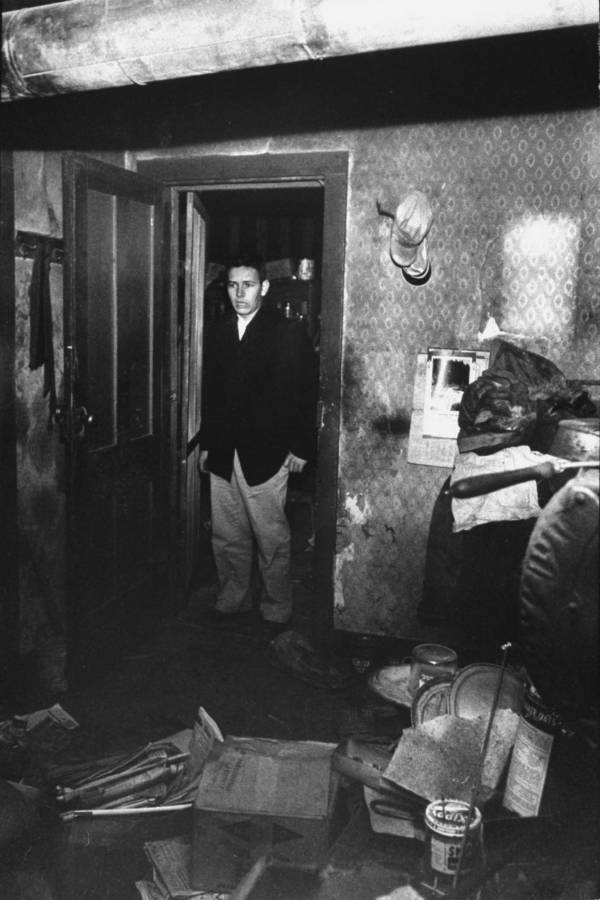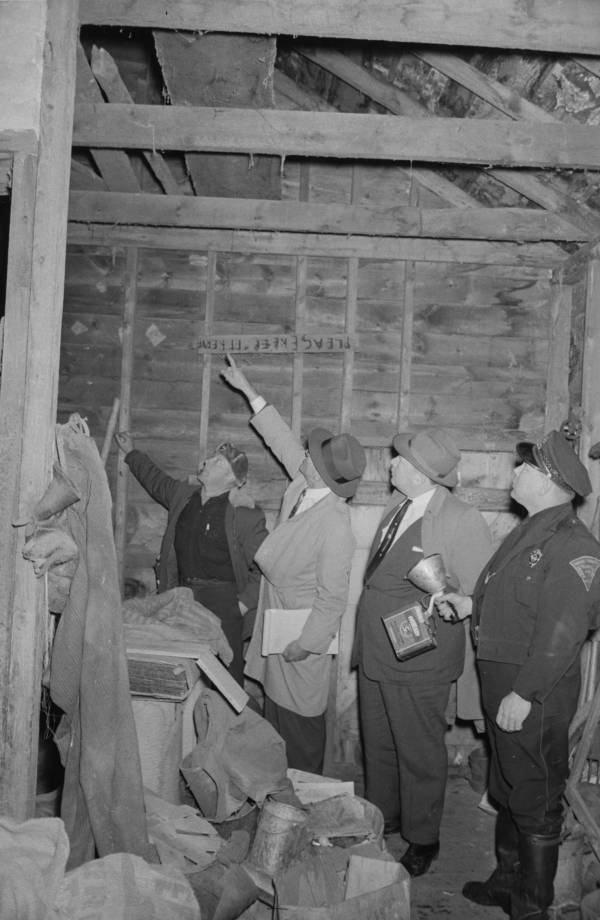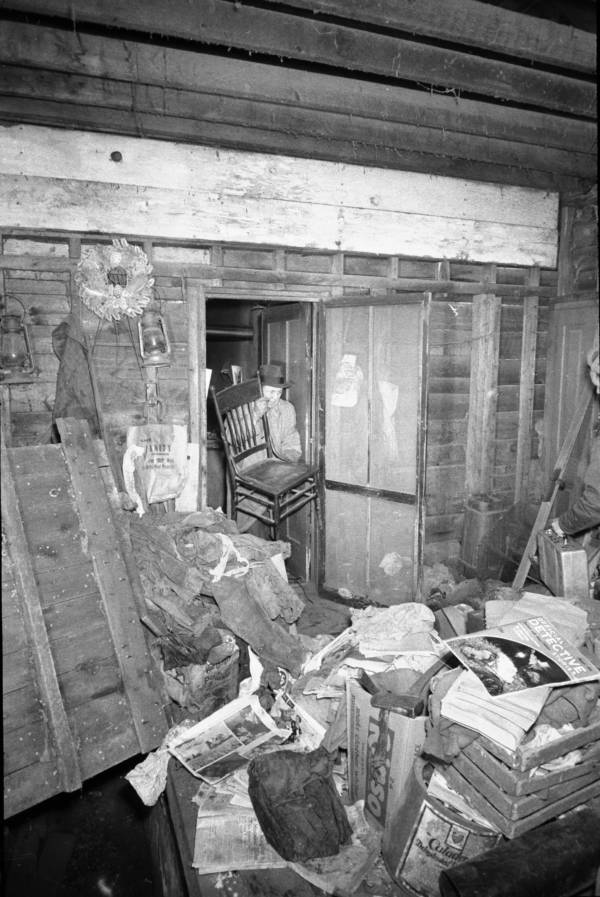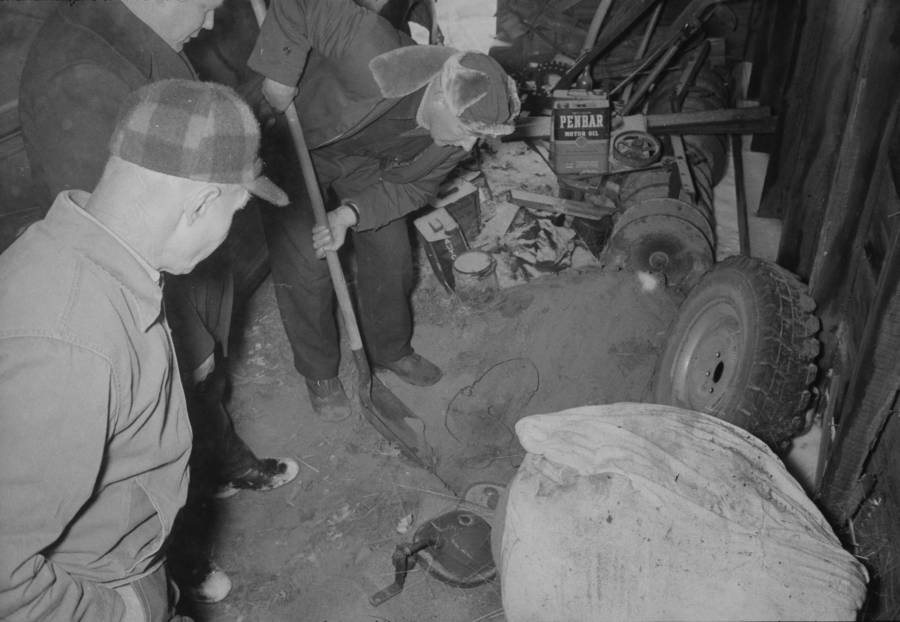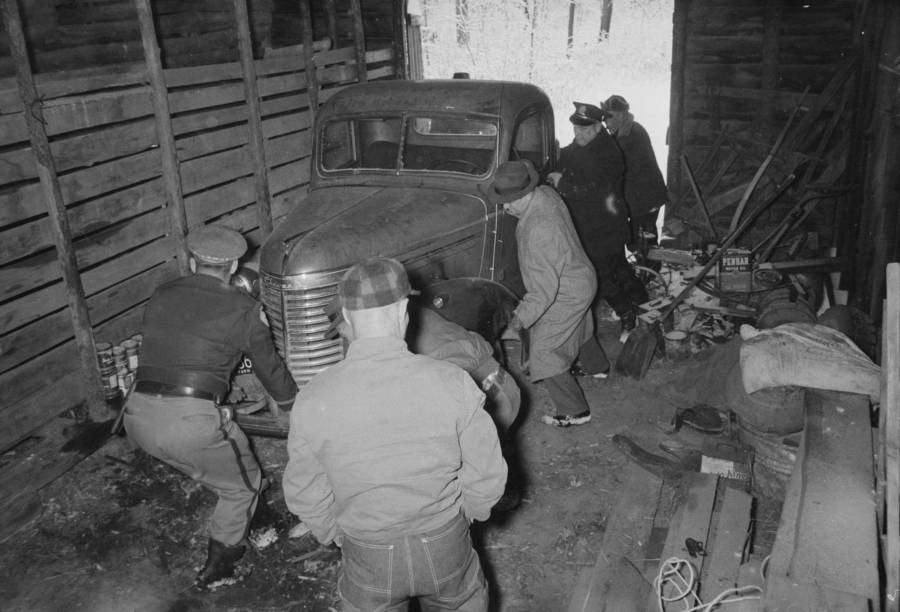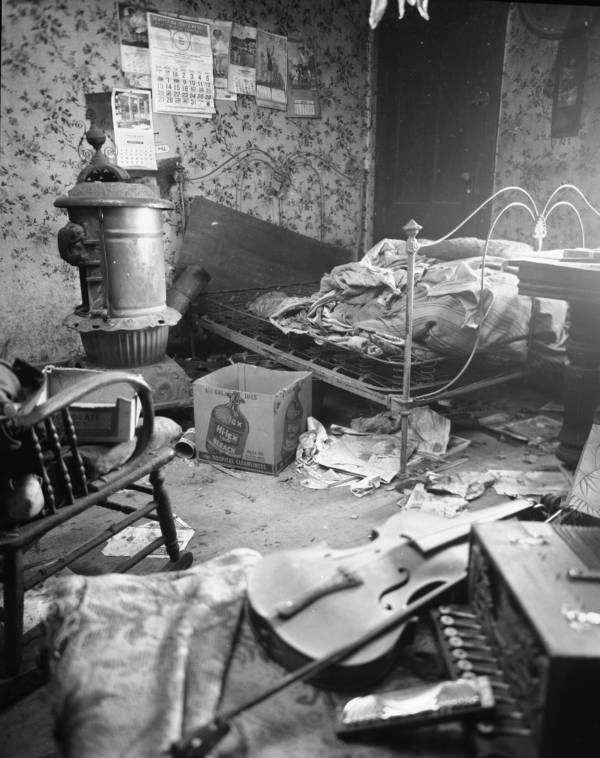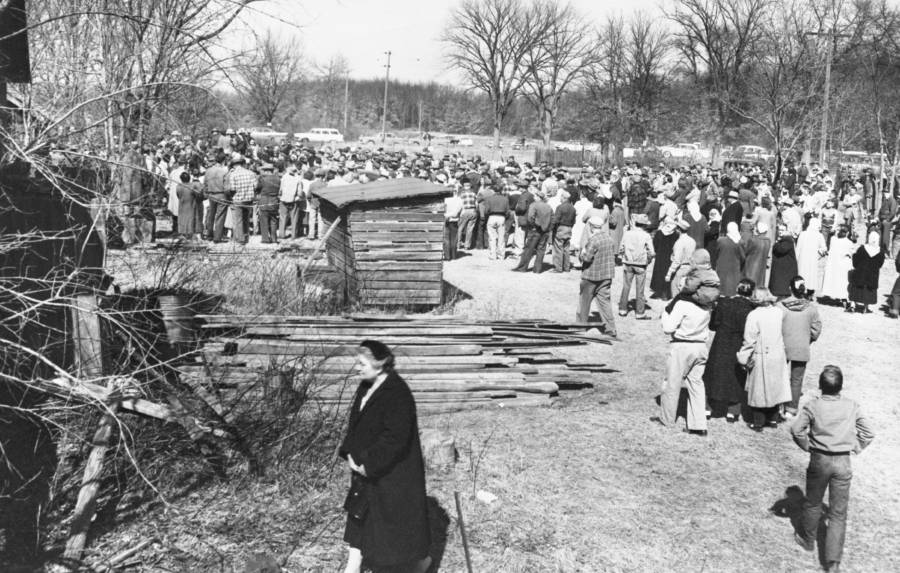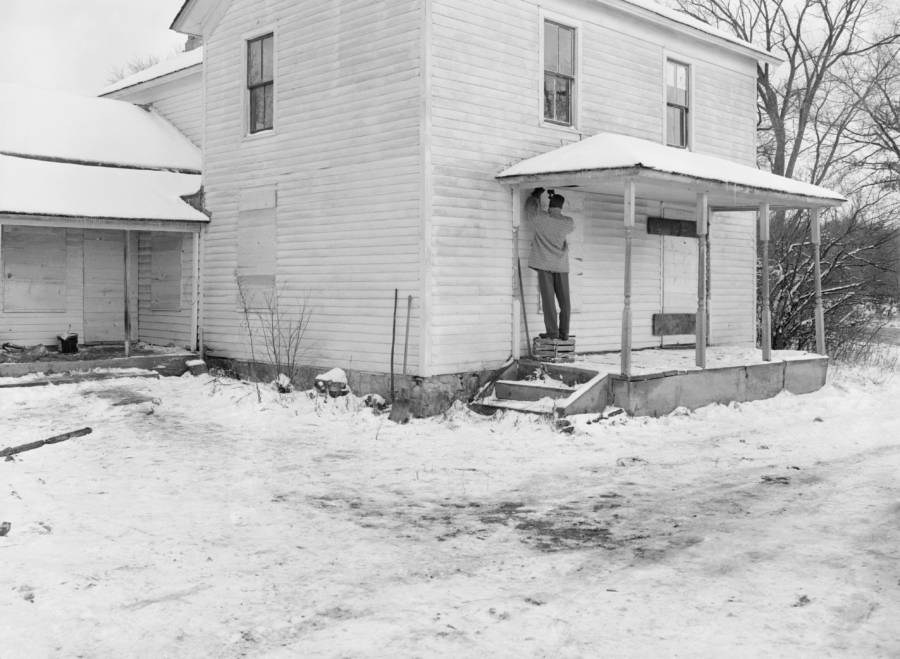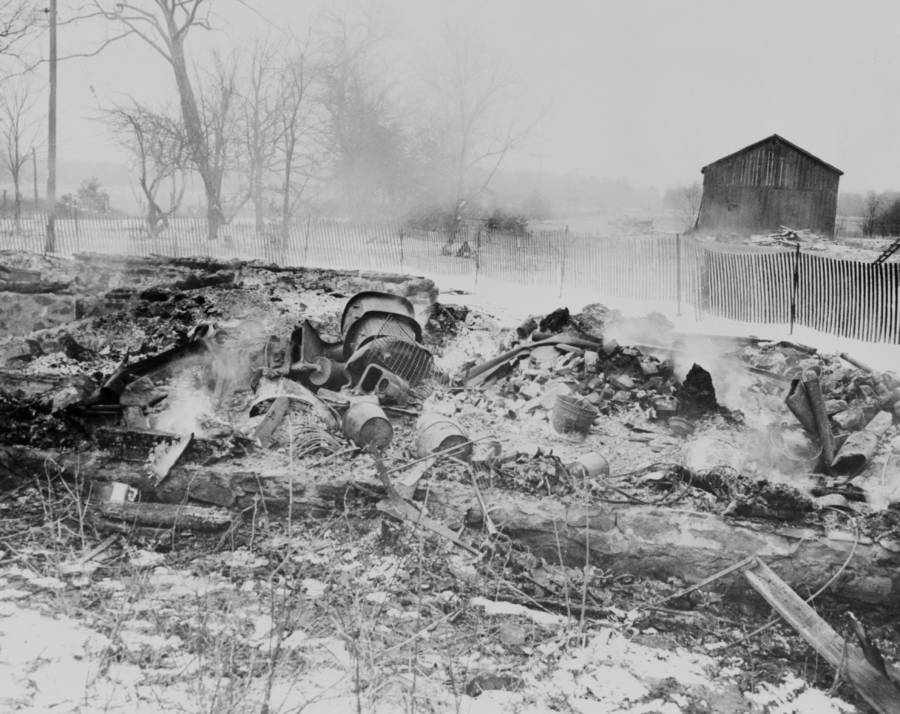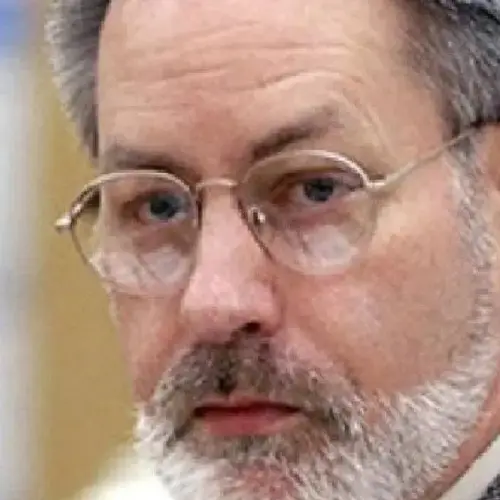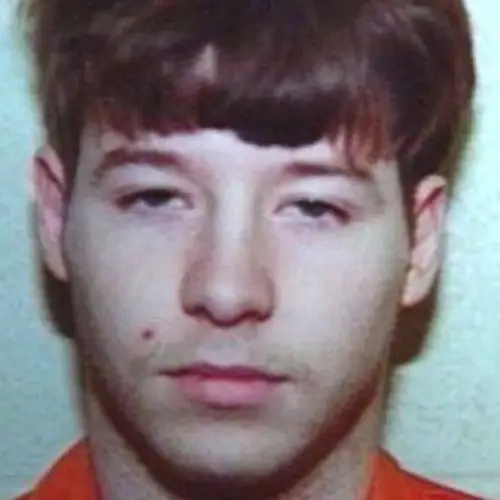A murderer and grave robber, Ed Gein collected human body parts to make clothing and household items in his Wisconsin home until he was caught in 1957.

Frank Scherschel/The LIFE Picture Collection/Getty ImagesCurious people look through a window into serial killer Ed Gein’s house in Plainfield, Wisconsin. November 1957. The bright lighting in the side ground floor window was part of the illumination for the on-site crime lab.
Serial killer Ed Gein may not have quite the same immediate name recognition as, say, Ted Bundy or Jeffrey Dahmer. But what authorities found in Ed Gein’s house upon his capture was such a shock to 1950s America that his heinous acts reverberate with horror to this day.
For one thing, Gein clearly had an unhealthy and long-lasting obsession with his deceased mother — a characteristic that heavily influenced Robert Bloch’s 1959 novel Psycho and the subsequent film adaptation.
The killer’s penchant for decapitation, necrophilia, cutting off body parts, keeping human organs in jars, and creating homemade chairs, masks, and lampshades with human skin became essential components of the terror portrayed in The Texas Chainsaw Massacre and The Silence of the Lambs.
But before Gein’s crimes inspired famous books and films, and embedded themselves in the collective psyche of a post-war nation seemingly enjoying a golden age, Gein was just another resident of Plainfield, Wisconsin.
Then, authorities stepped inside Ed Gein’s house of horrors — see the crime scene photos in the gallery below — and realized just how disturbed he was.
But what they found inside Ed Gein's house is even more unsettling after learning the full story. After all, most serial killers develop their gruesome interests early on, with fetishes of an abusive, sexual, or masochistic nature.
To understand Ed Gein, diving into his early years, which were spent in an abusive household with an overbearing mother, is the best place to start.
What Life In Ed Gein's House Was Like Before He Became A Murderer
Born Edward Theodore Gein on August 27, 1906, in La Crosse, Wisconsin, Ed Gein grew up with parents who were, by all accounts, a tumultuously mismatched pair. His father, George, was a physically abusive alcoholic, which meant that Ed was mainly watched over by his mother, Augusta.
Augusta, meanwhile, was a complete religious fanatic. Though Ed grew up alongside his older brother, Henry, no amount of sibling companionship could sway the tides of an overly puritanical matriarch.
Augusta ruled the home with an iron fist, inspired by her stern, conservative outlook on life. She'd regularly preach about sin and carnal desire to the two young boys while their father nodded off in a booze-induced stupor.
She relocated the Gein family to Plainfield in 1915. Ed was only nine when they moved onto their desolate farm, and he rarely left the family home for any reason besides school. This would be Ed Gein's house for decades — and the place where he would commit his ghastly crimes.
Though Ed had likely already been shaped and molded in terms of repressive behavior and unnatural rejection of normal urges, his mental health issues wouldn't truly take shape until both of his parents died. In 1940, when Ed Gein was 34 and still lived at home, his father died.
When Ed Gein Was Left Alone With His Mother
Ed Gein and his brother attempted to pick up the slack around the home and take care of additional responsibilities after their father died. The two brothers worked a variety of odd jobs to make ends meet.
In 1944, however, an alleged accident shrank the Gein family even further. Ed and Henry were burning brush on the family farm and the blaze apparently grew to uncontrollable proportions, ultimately leaving Henry dead.
It was only after Ed Gein's future crimes were discovered by the authorities and the world at large that true crime obsessives and amateur sleuths began wondering what really happened to Henry that day.
Regardless of how Henry's death happened, Ed now had his mother to himself. Ed Gein's house was now comprised of an aging, puritanical mother who shamed her adult son about the dangers of lust and a grown man whose fears and devotions forced him to stay and endure this environment.
This aspect of Gein's disturbed persona was most notably explored in Alfred Hitchcock's Psycho, through the character Norman Bates.
Gein never left the house for social gatherings nor dated anyone. He was entirely devoted to his mother and tended to her every concern.
Only one year later, however, Augusta Gein died. This is when Ed Gein's legacy as one of the most psychologically unhinged, dangerous, and macabre serial killers of the 20th century began in earnest.
The Butcher Of Plainfield's Grisly Murders Begin
Living alone in the house once inhabited by his parents and brother, Ed Gein started to go off the rails. He kept his mother's room spotless and untouched, likely in an effort to repress the fact that she'd died.
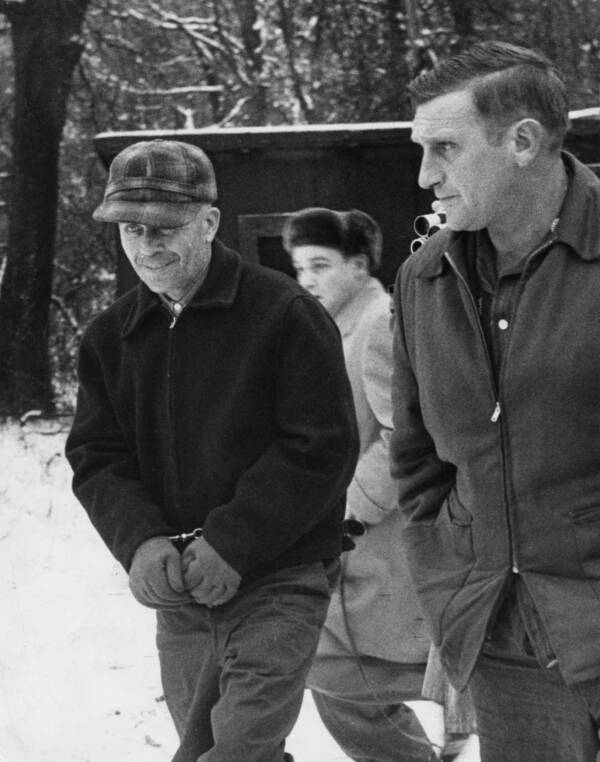
JOHN CROFT/Star Tribune via Getty ImagesA crime scene photo of Ed Gein being led away from his house in handcuffs after admitting that he'd killed two women.
The rest of Ed Gein's house, meanwhile, was utterly neglected. Everywhere, trash piled up. Stacks of household items, furniture, and nondescript objects collected dust and grew from small piles to undeniable mounds. At the same time, Gein developed an increasing curiosity about anatomy, which he initially sated by collecting numerous books on the subject.
This stage of Gein's psychological development, quality of life, and environment occurred at the same time that several Plainfield residents went missing. Chillingly, numerous people simply vanished without a trace.
One of these people was Mary Hogan, who owned the Pine Grove tavern — one of the only establishments Ed Gein regularly visited.
The Horrors Uncovered Inside Ed Gein's House
Mary Hogan was not the only missing person to attract attention in and around Plainfield after her disappearance in 1954.
A few years later, Bernice Worden was also reported missing on Nov. 16, 1957. The Plainfield hardware store she worked in was empty, the cash register was gone, and there was a trail of blood leading out the back door.
The woman's son, Frank Worden, was a deputy sheriff and he soon became suspicious of the reclusive Gein. He focused much of his investigation on Gein, who was quickly located and apprehended at a neighbor's house.
The killer's carnage and bloodlust had finally come to a close when the authorities who were dispatched to Gein's home that night discovered the stark, undeniable evidence they likely never thought they'd encounter.
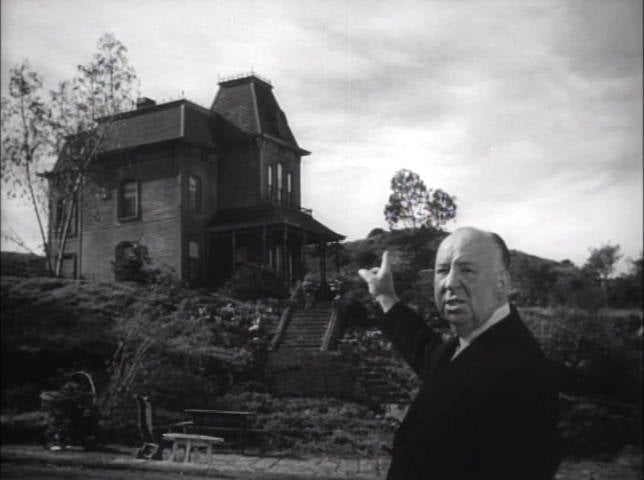
Wikimedia CommonsAlfred Hitchcock's Psycho was hugely inspired by Ed Gein's obsession with his mother and his crime scene photos.
In addition to Worden's decapitated corpse — which had also been gutted and hung from the ceiling — officers searching Ed Gein's house found various organs in jars and skulls turned into makeshift soup bowls.
It didn't take too much prodding for Gein to confess to murder. He admitted to killing Worden, as well as Mary Hogan three years earlier, during initial questioning. Gein also confessed to stealing a number of corpses from graves, which he used for some of his most grotesque crimes.
After Gein transported the corpses back to his house, he cut off various body parts, performed sexual acts on the deceased, and even made masks and clothes from their skin. Gein would wear them around the house. A belt made of human nipples, for instance, was among the grisly evidence.
As the Plainfield police department had an endless backlog of unsolved murders and disappearances on its plate, authorities tried their hardest to pin a few of these on Gein. In the end, they were unsuccessful, and it's uncertain whether Gein simply didn't want to admit to things he hadn't done or if he didn't want to give them the pleasure of aiding in their work.
Clearly convinced that the unprecedented crimes of Ed Gein could be viewed as the result of mental health issues, his lawyer William Belter entered a not guilty plea by reason of insanity. In January 1958, Gein was found unfit to stand trial and committed to Central State Hospital.
He had previously been employed there, working various odd jobs, including a mason, a carpenter's assistant, and a medical center aide.
Ed Gein's Trial And Lasting Legacy Of Horror
Ten years after Ed Gein's house was raided and he was committed to Central State Hospital, he was found fit to stand trial. He was soon found guilty of the murder of Bernice Worden. However, since Gein was also found insane during the initial trial, he was again committed to Central State Hospital.
In 1974, Gein submitted his first request for release. Due to the dangers he posed to others, this was rejected. Fairly calm when he wasn't in a manic, murderous state, Gein mostly kept to himself while institutionalized.
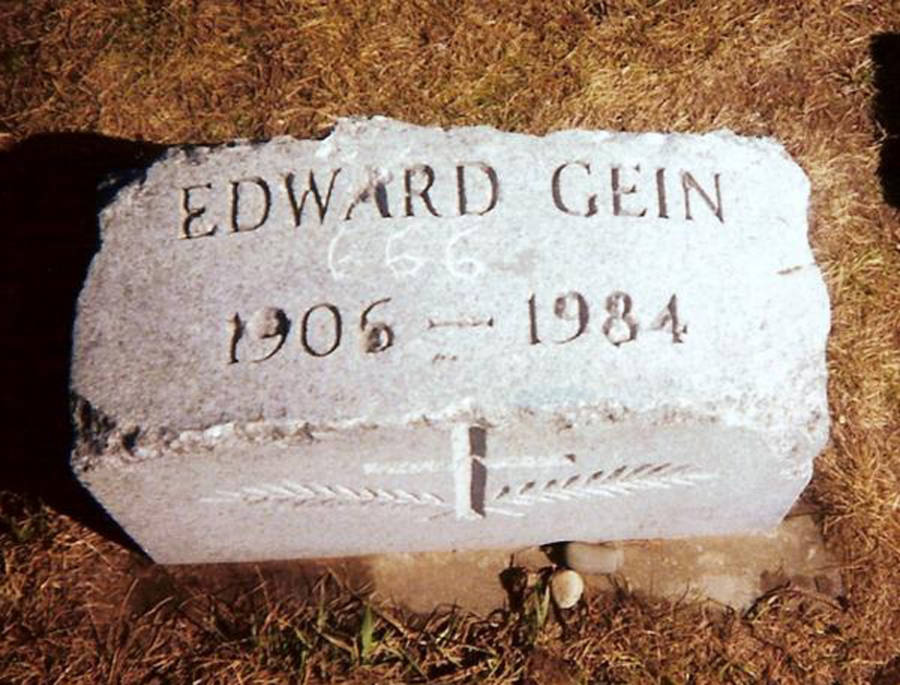
Wikimedia CommonsThe Butcher of Plainfield's grave marker was stolen in 2000, but it was recovered a year later and placed in storage.
Only when Gein's health deteriorated in the late 1970s did he leave Central State Hospital. He was transferred to the Mendota Mental Health Institute, where he died of cancer and respiratory illnesses on July 26, 1984.
Gein's legacy is primarily one of unspeakably horrific sexual deviance and shockingly gruesome carnage. This was the first time most Americans were even confronted with the idea of turning a person's skin into a mask, necrophilia, or using human bones as part of various kitchen utensils.
The canon of American serial killers, true crime, and their overflow into pop culture arguably began with the discovery of the horrors in Ed Gein's house.
From classic horror films such as Psycho, The Texas Chainsaw Massacre, and The Silence of the Lambs to music groups like Cannibal Corpse, Ed Gein's legacy was just as much about tangible disgust as it was an opportunity to explore how vile humanity can be through artistic expression.
After this look into Ed Gein's house of horrors and his crime scene photos, discover the most chilling quotes by serial killers. Then, take a look at the best serial killer documentaries that will chill you to the bone.

